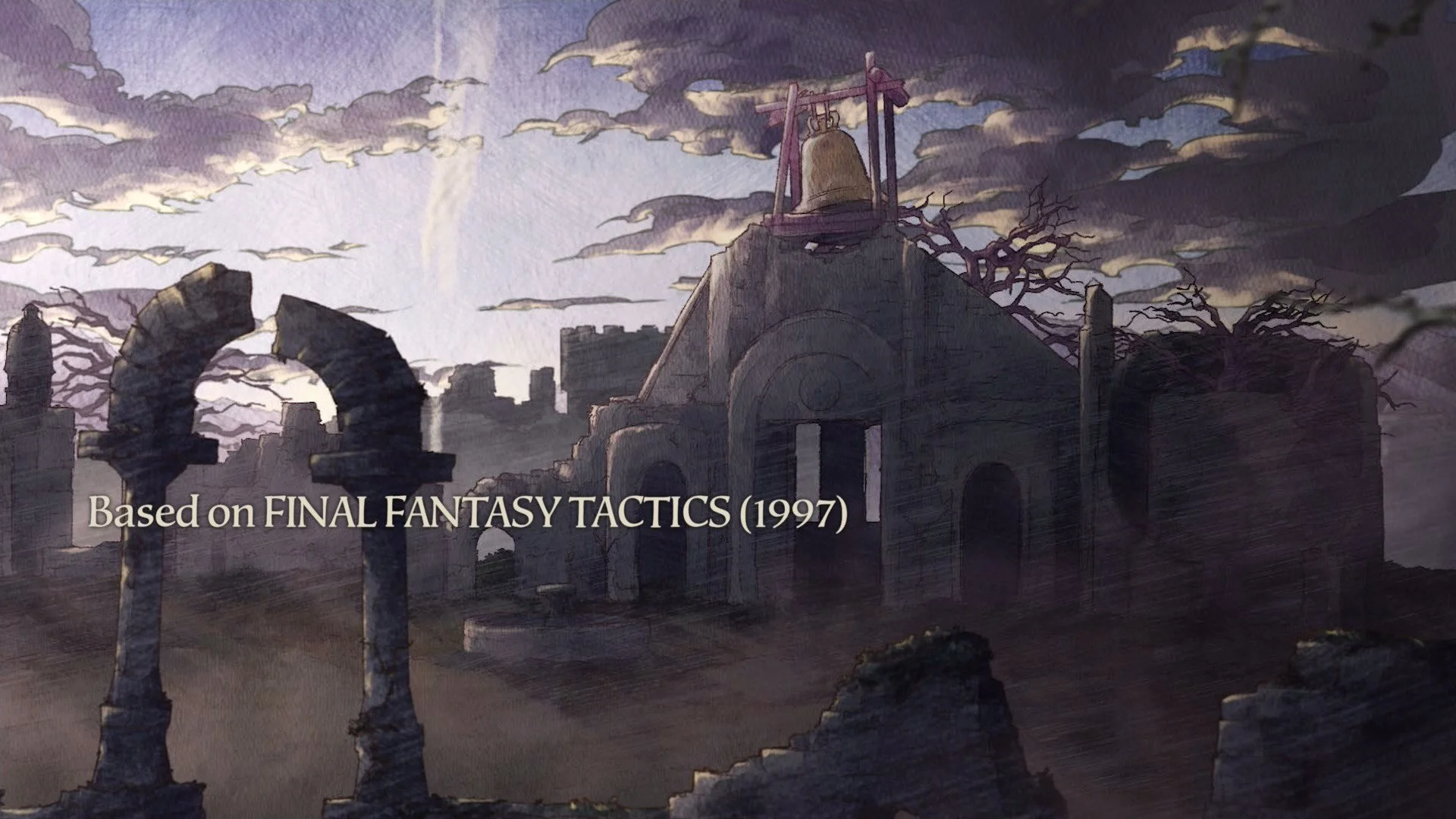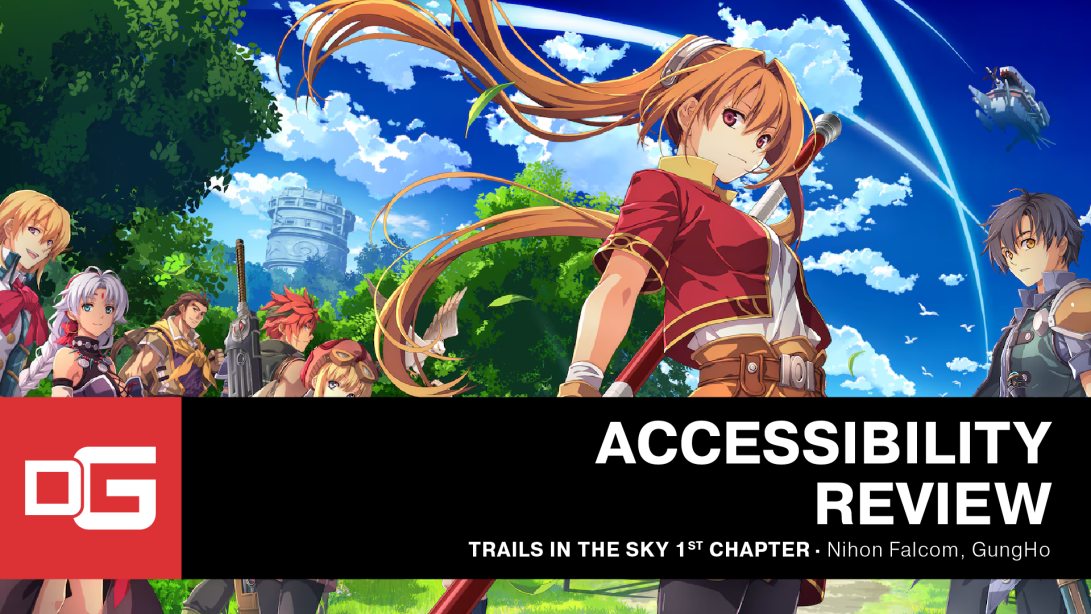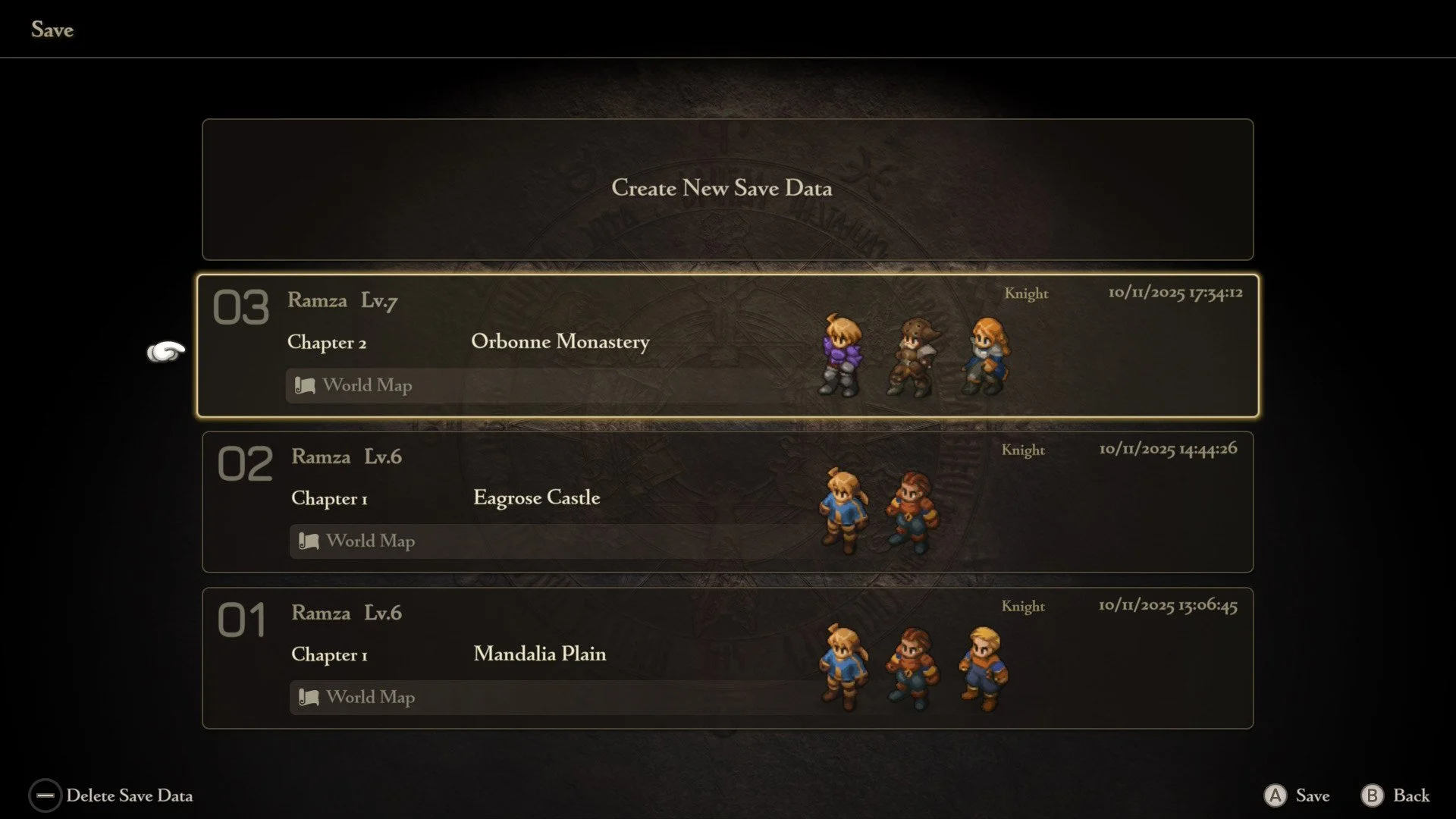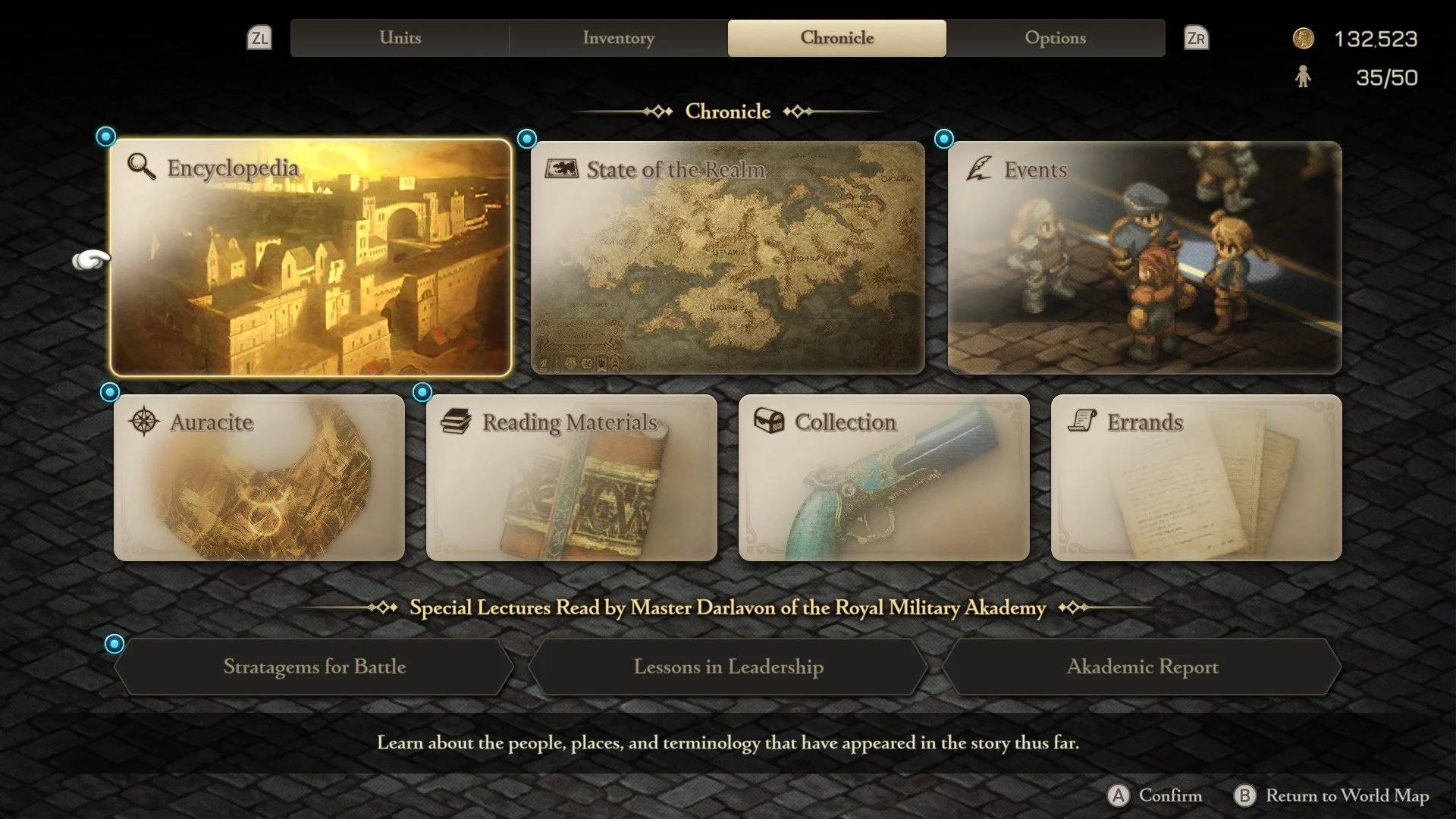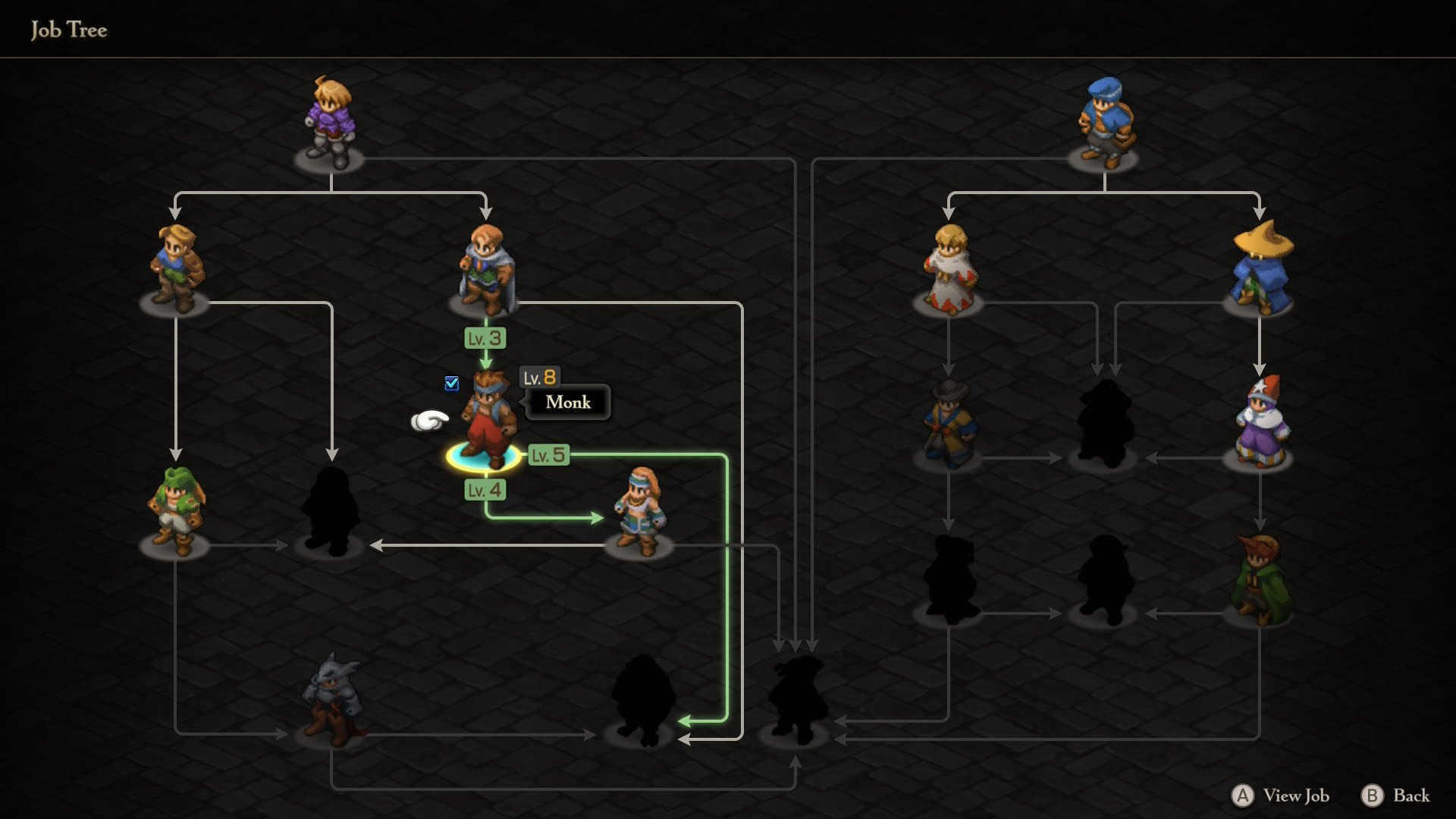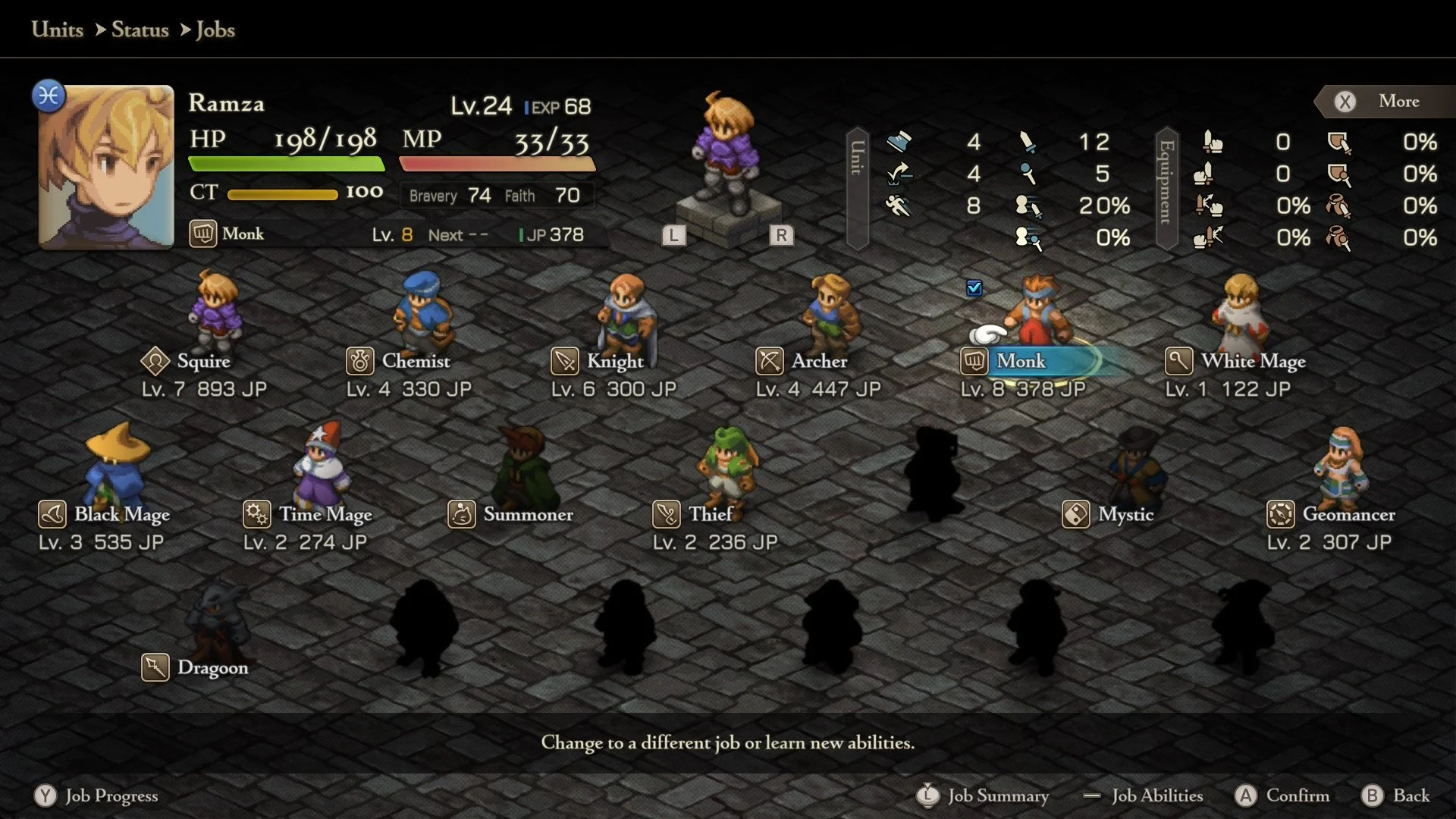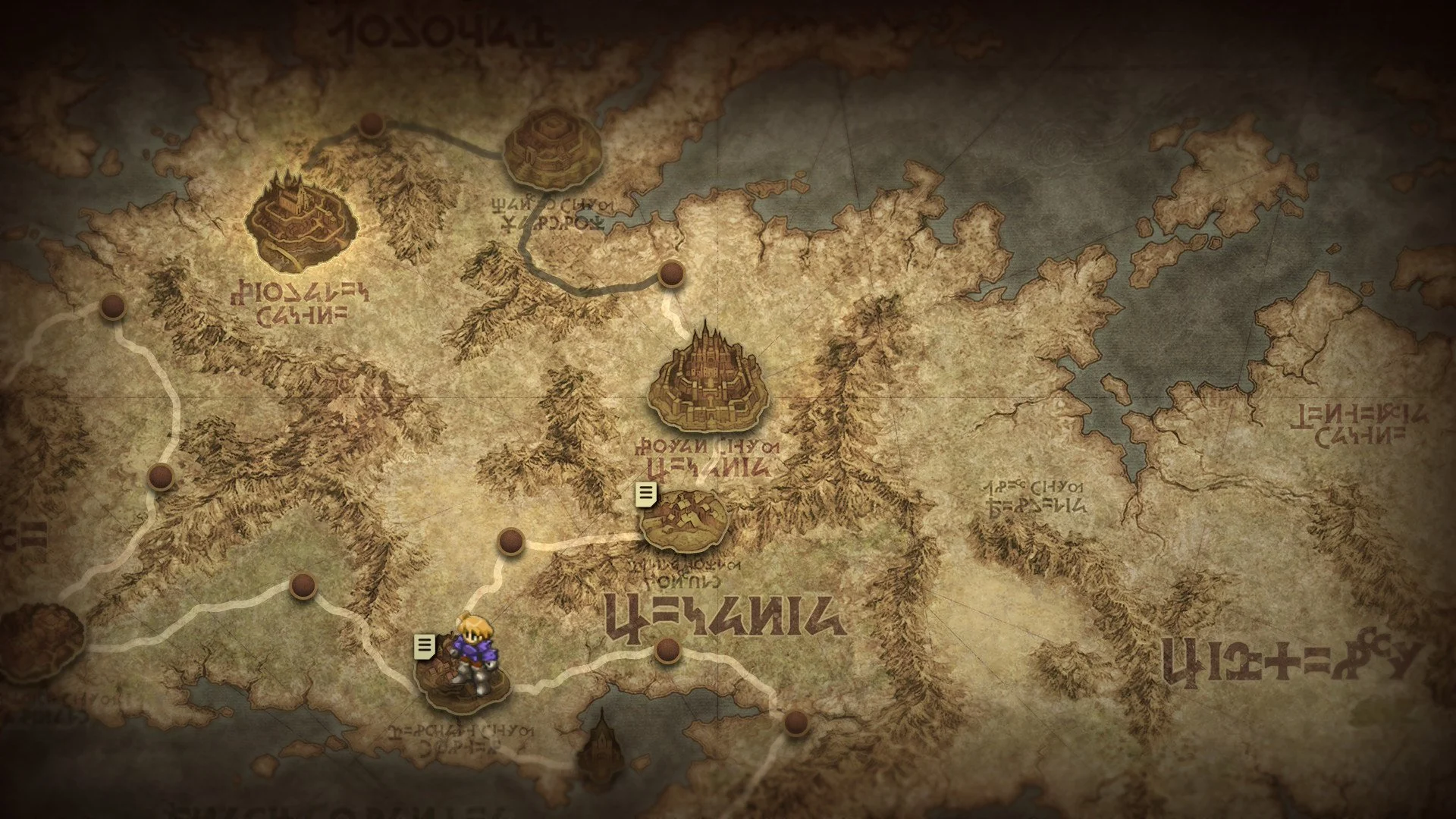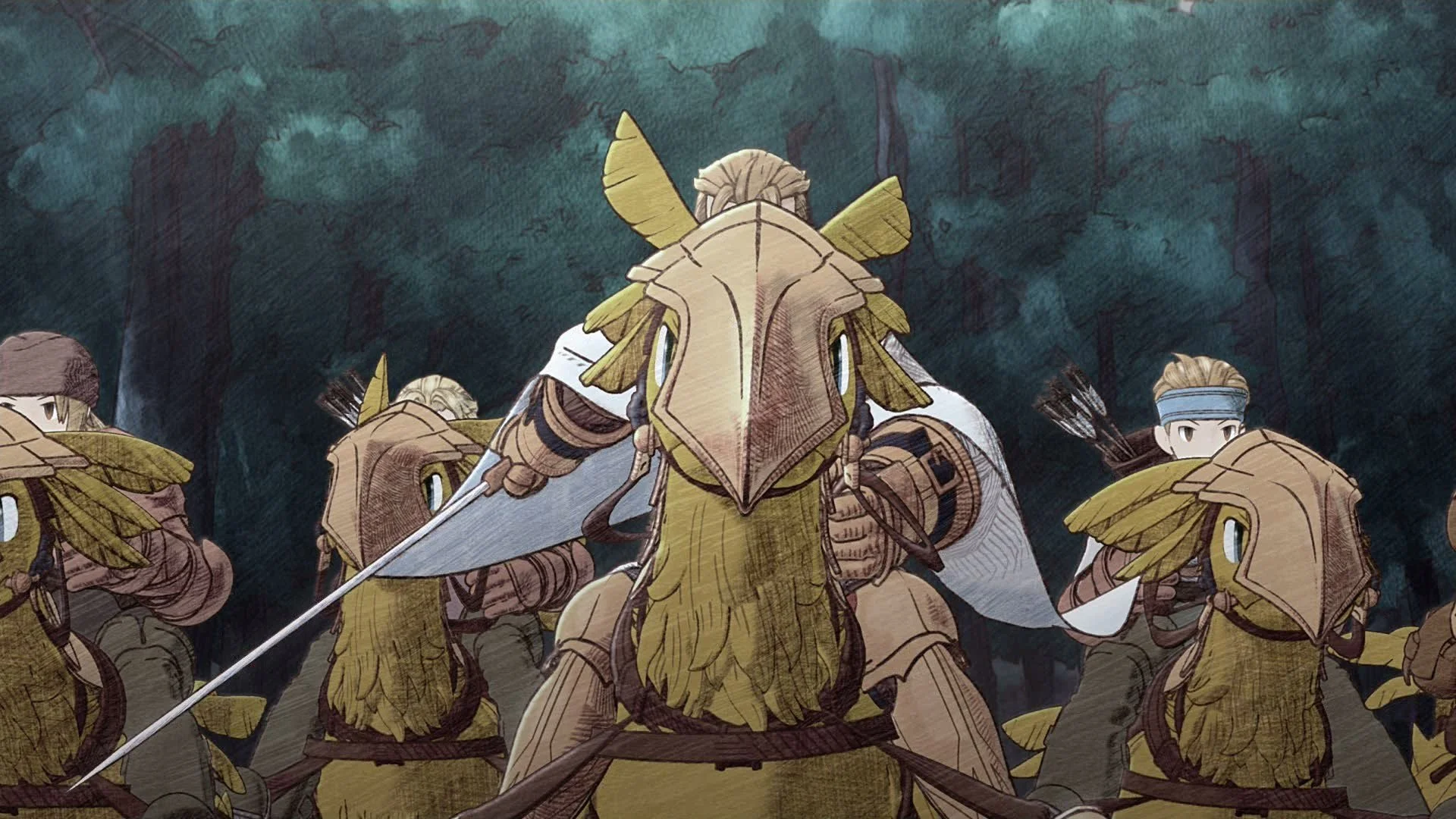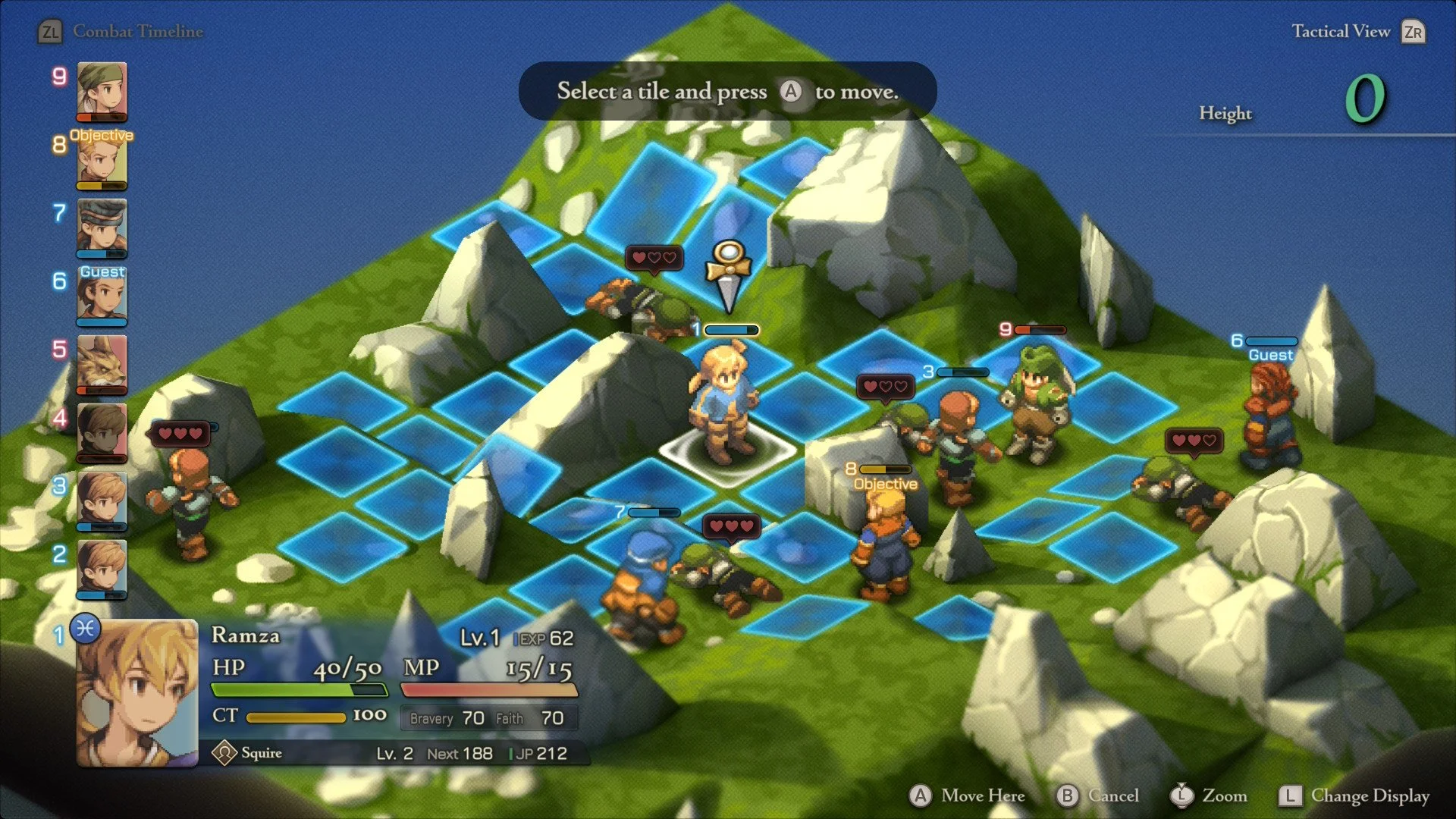Dear Gamers, how do you critique the classics?
All of us have games that we love, especially from our younger years. Gems of a bygone era that helped raise us and set our imaginations on fire by bringing to life vast and vibrant new worlds.
Decades down the line, we hope and pray for these golden-year games to get remakes and remasters that make them playable on modern hardware with the widespread availability and quality of life those platforms can offer.
But not all re-releases bring equal levels of QoL and especially accessibility to these beloved games, and that’s what I find myself mentally wrestling with today.
First of all, I want to make 2 things clear:
We are so lucky that any of these remakes/remasters exist. We could easily live in a timeline where none of these classics are preserved and brought forward not only for old fans to enjoy, but for whole new generations of players to discover
I’m loving the game I’m about to discuss. It comes from my favorite franchise of all time. Its timeless story still rings true today by examining themes like class warfare, the manipulation of people through their beliefs, and the personal struggle of reconciling family, name, and identity. There’s a reason it has inspired so much love in players and developers alike throughout the years
As the images in this article have likely already given away, the game I’m talking about is Final Fantasy Tactics: The Ivalice Chronicles.
Released on September 30th for PC, PS4/5, Switch/Switch 2, and Xbox Series X/S, The Ivalice Chronicles is a faithful recreation of 1997’s FFT, albeit borrowing several key things like the updated translation from 2007’s The War of the Lions’ version and even adding in cut content from the original.
Even though I first fired it up while I was quite literally on vacation, the reviewer part of my brain can’t help but draw comparisons between how this re-release of FFT was handled vs. another very recent remake of a JRPG classic, Trails in the Sky 1st Chapter.
*Again, let me stress that I am loving my time playing FFT. I’m wholly sucked into this narrative especially as an Ivalice/FFXII fan. And tactics, turn-based battles, and job systems all have a special shortcut to the switch in my brain that turns on the instantaneous, unending drip feed of seratonine.*
BUT.
Just because you love a thing, doesn’t mean you can’t or shouldn’t critique it.
And just because you critique a thing, doesn’t mean you can’t or don’t love it.
If anything, you should challenge yourself to look at the things you love with a critical eye and ask, “Why do I love it? What makes it work for me? Why doesn’t it land the same for others? And how could it potentially be even better…?”
I’ve actually repeatedly gone on the record as saying that critical analysis is my love language – if I didn’t care enough to sit and think and obsess and spend my time writing, editing, and sharing my thoughts on a game, then I wouldn’t do it. My free time is for the things that ignite my passion, and anything else can take a backseat.
All that is to say: welcome to my dictated therapy session as I grapple with the task of critiquing a classic game that I’m enjoying, from a franchise that I love more deeply than any other in the world, and sharing that publicly with a group of people who I know love this game even more passionately than I do.
So now that I’ve made this sound WAY more high stakes than it is, what is it that I can’t stop thinking about even as I grind JP until I look up at the clock and realize I should’ve been in bed an hour ago?
Recently, I did a full accessibility review of the Trails in the Sky 1st Chapter remake that released back on September 19th. And the way I started that review is ironically why we’re here today:
I kicked it off by saying that JRPGs – even the turn-based ones – have traditionally struggled with accessibility. You might say, “Turn-based? Of course that’s accessible!” because you don’t need fine motor skills or strong vision and hearing in order to defeat your enemies and progress towards victory.
But many traditional JRPGs are full of small, hard to read text, lengthy but not universally helpful tutorial messages, tons of hard to understand and manage stats or mechanics, hidden or easily missed content that could make or break an experience, and a general lack of what are now considered modern QoL staples from fast travel, save states, and full button remap to cut scene replay, equipment loadouts, and in-depth display/audio options.
In my review of Sky FC, I concluded that it was one of – if not the – most accessible JRPGs of 2025. As a remake, it tackles nearly every one of those accessibility issues that traditionally plague the JRPG genre.
But unfortunately, this new version of FFT doesn’t hit that same standard.
That’s not to say it lacks any modern accessibility features – don’t get me wrong. They did make several helpful updates to the gameplay and UI, but while a lot of these changes are great first steps towards a more broadly accessible and approachable FFT, I can’t help but think that most of them could have been taken yet another step further.

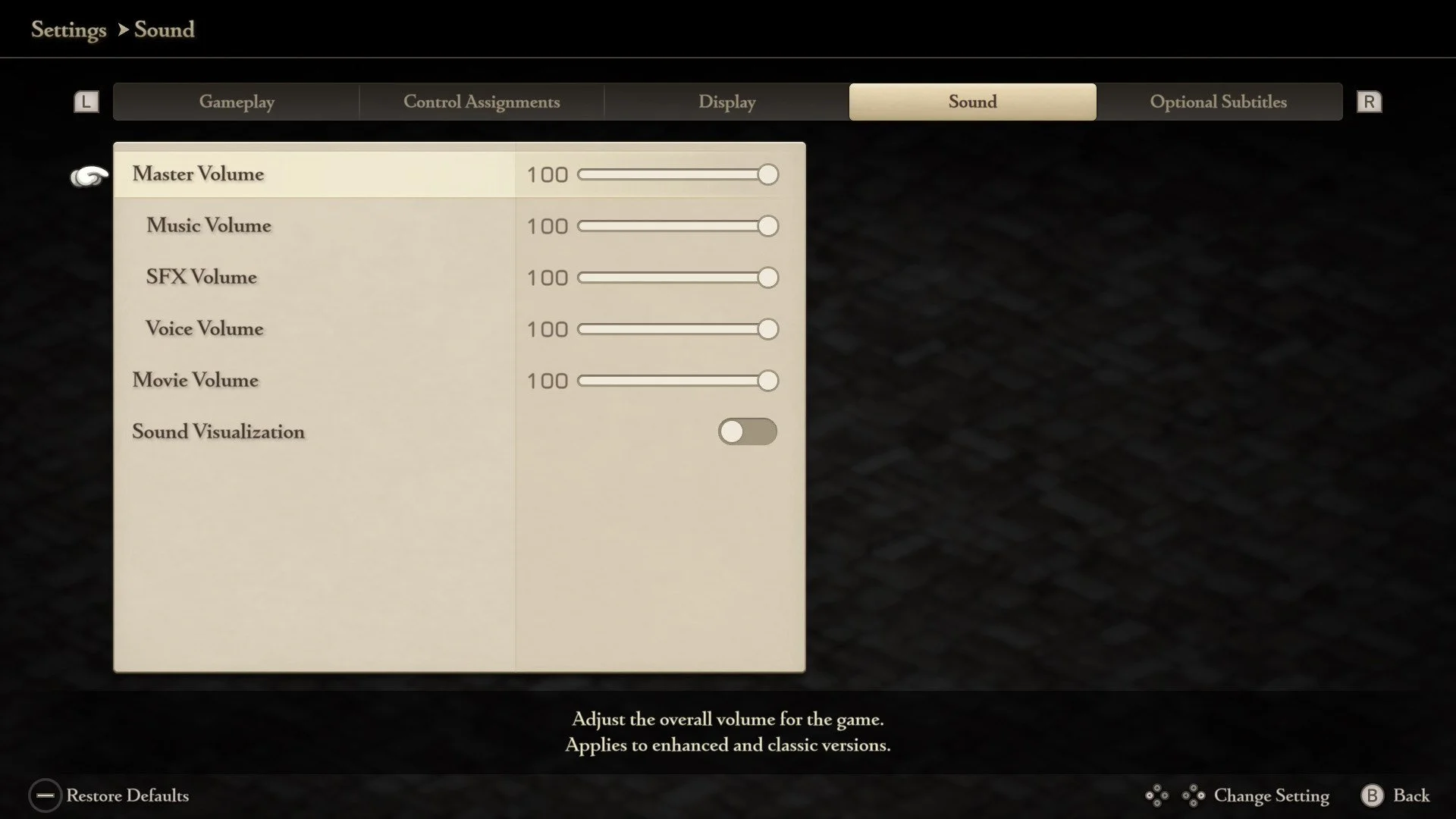

I’ll explain as I go, but I want to note that this is *not* a full accessibility review – I’m still mid chapter 3 at the time of writing and therefore haven’t even touched what is arguably the whole second half of the game.
That said, my brain won’t shut up and so I’m taking the mental space to talk this out. For starters, here are some major wins in the new version of FFT:
First and foremost, the voice acting. Not only is it super high quality across English and Japanese, helping to bring the characters to life like never before with tons of emotion and gravitas, it also benefits accessibility by giving blind/low vision or dyslexic players a massive leg up for taking in the story by being able to listen along
Second, the save states are super generous. The game constantly auto saves (even keeping multiple saves in its recent memory) and gives you multiple manual save slots you can use any time outside of battle
Third, they’ve introduced 3 difficulty settings, including an “easy” mode and even the “normal” now being supposedly balanced more forgivingly than the 1997 original
Fourth, there are a fair few modern QoL systems in play like being able to save up to 3 combat sets per character for swapping their gear/abilities for different tactical situations, gear optimization that recommends the best equipment for a given unit, the ability to reset movement prior to taking an action in combat, visualizations that preview the effects your actions will have on enemies and even the turn order, etc.
But looking beyond, I can’t help but notice how limited the overall settings are and see things that this new version of FFT could have done to make the game even more accessible to players of all walks – not just able or disabled either, but vets or newcomers to FFT and the tactics genre altogether.
The devs (including returning veteran Kazutoyo Maehiro, taking the lead as director) clearly put their love into doing a faithful remake of the 1997 original. They even did interviews to discuss why they made certain changes while forgoing others that were introduced in WOTL.
So I guess my question for you is this:
Could you still deliver this as a faithful remake of the classic FFT while making even more modern tweaks to the formula, especially in the game’s settings, tutorials, UI and certain mechanics?
I’m not asking for something as radical as going full-on Fire Emblem: Three Houses with it and letting you rewind battles midway through. I could see how something like that could unduly transform the experience beyond the original vision.
But I think there are other improvements they could have made when creating this new version of FFT for modern audiences without changing the scope of the game – although maybe it would further change the original “feel” of it so I’m more than happy to hear others’ thoughts on what I’m about to say.
See, when it comes to my advice to new players getting into this Ivalice Chronicles version of FFT, I immediately jump to saying you should use a guide. If you’re overwhelmed or confused or struggling from the outset or frustrated at any of the difficulty spikes you may encounter, my first advice will be to look outside the game and grab a guide.
Why is that? The game has tons of info in its extensive glossary that contains the gameplay tutorials as well as helps you keep track of key characters, terms, and events. But even with all of that written in the menus, FFT can still be inscrutable since the explanations offered aren’t always complete or super easy to digest.
For example:
What do Zodiac signs do for each character?
How do you affect a unit’s bravery or faith? Can you even affect it over time?
Even with the new job tree visualization, how do you know which jobs you should prioritize for your playstyle? How do you know which characters will be suited – or even eligible in some gender-specific cases – for each role?
How much should you grind? And when? Should you even be grinding, whether it’s your overall character levels or job points/levels?
How can you tell if the party you send on an errand will be successful? Do the units’ levels matter? Do their jobs affect the odds of success?
How much should you worry about grinding random battles for poaching? What should you be poaching? What should you be stealing? Who has good gear worth trying for? Are there key items that you could miss?
And even looking at simpler things in the menus like trying to see how changing a unit’s job will affect their stats, the game doesn’t give you an easy side-by-side comparison. And in the battle formation stage, placing a slightly faster or slower character on a tile one square further to the left or right can wholly rewrite how the enemy AI will react to you from turn one in a battle. Basically, it’s not always super clear what affects what and how.
The game wants you to learn by trial and error, which is totally fine. That’s a tale as old as time and there’s no substitute for experience. But when you run into that wall of error, I can see how quickly FFT could become frustrating for some.
You can retry a battle at any time, either retrying outright or redoing your formation first. You can even escape to the world map so you can grind or get new gear before re-attempting. But there’s quite a bit of friction there because of the sunk cost of time.
Rewatching scenes, wondering if you even have the right jobs leveled, struggling to finagle just the right battle formation so that the enemy AI doesn’t dogpile on you before you even get a turn…
Sure, you can fast forward through scenes you’ve already watched when re-attempting battles. But you can’t actually just skip them – you have to hold down the fast forward time and again. And while I personally appreciate the value of the newly added dialogue for unique characters within certain battle scenarios, upon multiple retries the time spent fast forwarding through those lines over and over can add to frustrations with time spent on failed battle tactics.
And to that end, a few things in this game are a button hold rather than a button press. That can seem like a MEGA nitpick to some, but to others with motor disabilities, being able to toggle things like a fast-forward or the game’s helpful tactical view (which gives you a more unobstructed isometric view in battles) instead of holding a button can be a game-changer.
And even if you ignore all that, retrying the battles while wondering if you’ve grinded the right jobs or abilities can leave you asking if you wasted a ton of time on the wrong things, and/or make you feel like you need to go grind something else to overcome some tricky challenges that might wreak havoc on your party with status effects, high AOE damage, or even breaking/stealing your gear outright.
If you listen to any FFT guides on YouTube, you’ll hear a lot of varying opinions about which jobs you should use and which abilities are worth it vs. not – and I think the range that the game offers just means that there are a ton of solutions, which is great! But also, it feels like there’s a bit of an imbalance with a lot of abilities or even entire jobs that are agreed upon as less useful or more difficult to optimize, leading to a lot of pitfalls for potential new players to fall into.
Overall, the game doesn’t do the greatest job teaching you via its tutorials, either with scripted scenarios in early game battles or the written tutorials in the menus. So suffice it to say, I think there’s a good reason why so many extensive Wikis, YouTube beginners’ guides, decades-old Reddit forums, and even a whole companion app exists for helping players navigate FFT.
It makes me want to go back to the confused child-me who first encountered FFT at a friends’ house and put a hand on her shoulder and say, “It’s okay kid, you’re not dumb. Your dial-up internet is just too slow.”
(Although that said, I don’t think even if I could load GameFAQs reliably back then that it would’ve helped me beat the game…)
I don’t want to seem like I’m being totally negative (or like I’m just really bad at SRPGs… I promise you, I have since grown up, played, and beaten several of them). And I also don’t want to come across as saying that all games should be easy, or that there’s no room for hard games or even friction in game design. When done right, friction can actually be incredibly rewarding if it makes you feel like you earned your victory.
But – especially – when remaking a classic to bring it forward with all the things we’ve learned in the years since its original release, I think there’s an opportunity to do things that invite not just returning vets who know the quirks of your systems and which boss fights to watch out for, but new players to come in and try your game as well.
Not every game has to be for every player, and not every game has to be newcomer-friendly for genre first-timers. But circling back to where this rambling therapy session began, it doesn’t mean that I can’t examine the things a game could have done better to maintain its original vision, complex systems, and level of challenge while being open and approachable to more new players across generations.
While I would love to be able to recommend FFT: The Ivalice Chronicles to anyone who sees it and wants to jump in, I can’t help but hesitate and point many of them towards potentially more accessible options like a modern Fire Emblem or even Square’s own Triangle Strategy first.
So before I sign off and turn this discussion over to you, here are some things I think FFT could have added without taking away the magic of the original game:
Text size & font options for in-game text, menus and UI
A text log that saves recent dialogue and notifications (~100 lines, EXTREMELY important since you can accidentally press the button to advance dialogue and miss entire lines, and post battle notifications fade quickly after they pop up on the world map, alerting players to new gear or errands, etc.)
Full button remap
Options to toggle hold vs. single button inputs for things like the tactical view mode or fast forward. (For example, it may be difficult for a motor disabled player to hold the right trigger to enter tactical view while also using multiple other buttons to move units and execute abilities. Also, fast forward doesn’t just advance cut scenes but is the equivalent to turbo mode in battles so you have to hold the right bumper the whole time to speed up combat)
Further improvements to the menus that show how changing a unit’s job and/or gear affects stats. I know they’ve already brought the job tree forward as an addition to this version, but it does feel like there could still be a better way to show players how to interact with the job system, plan their progression, and grind/work towards that efficiently
Recommended levels for your party when previewing a main mission combat stage based on the enemies you’ll encounter there. This could also apply to recommended levels/jobs for things like your errands
More customizable difficulty options. Currently, FFT offers 3 traditional difficulties that equate to easy/normal/hard, but more individualized settings that let you increase/decrease damage you do vs. damage your enemies do etc. could more finely tune the player experience. I may even posit that easier/assist modes could turn off permadeath – but that’s something I could see the devs not wanting to implement (like with my FE3H rewind mechanic comparison earlier)
Rebalancing some of the difficulty spikes (like instances with one-on-one fights/limited party scenarios, or times you’re slightly too slow meaning your enemies can jump you or the person you’re protecting before you even get a single turn)
Clearer, better explained tutorials. Admittedly, this is one I don’t know how to rewrite or fix – there’s a lot of writing in these menus, and I can see especially how for newcomers the information it presents may be somewhat opaque or indecipherable. It may just be down to how tricky some of the game’s mechanics are
So what do you think, dear gamers?
Am I totally off the mark? Are some of my ideas valid? What do you think about critiquing something as classic, timeless, and influential as FFT, especially when it comes to the topic of accessibility?
Please let us know! I would love to hear from you as I keep on wrestling with my love of critiquing the things I love most. I guess I’m still here doing it because at the end of the day, more people being able to play more great games is the biggest win for this community.
Sincerely,
Michaela




